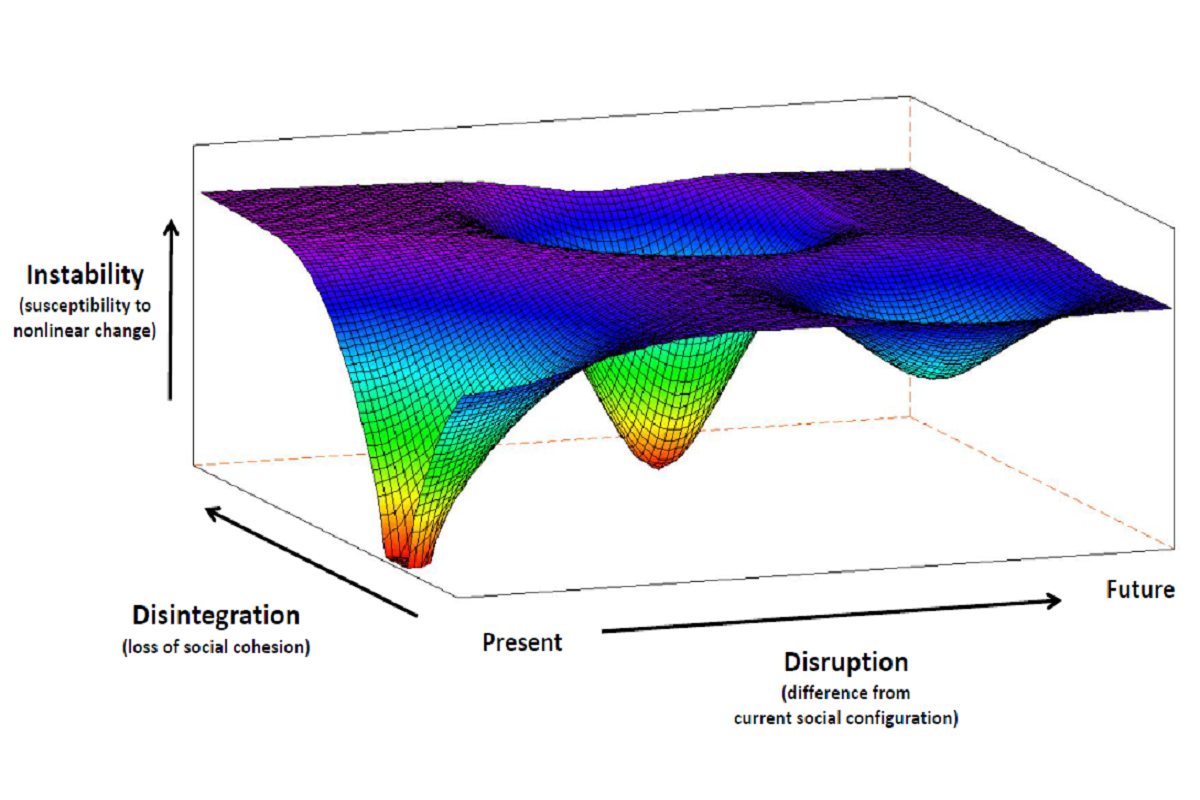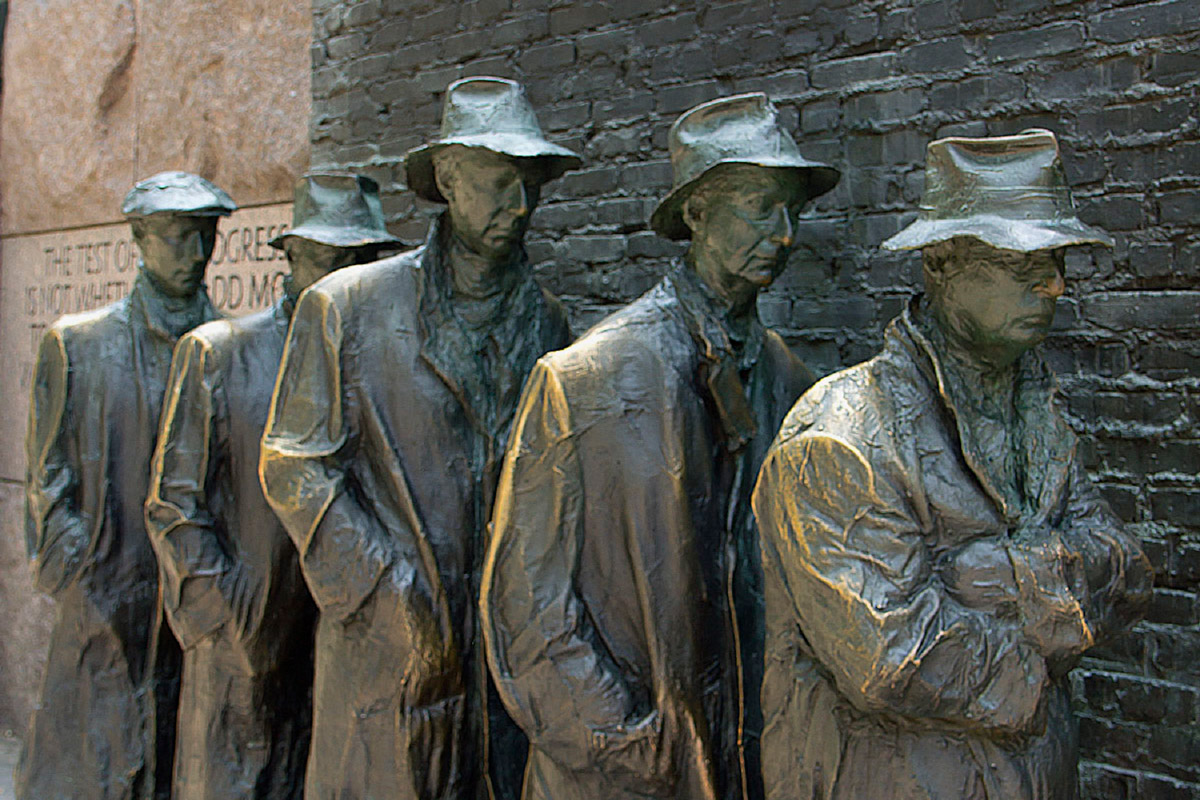Population and Development Review 32, No. 3 (September 2006): 585-87
by Thomas Homer-Dixon
What is the relationship between environmental stress—especially shortages and degradation of cropland, forest stocks, and supplies of fresh water—and civil violence in developing countries, including insurgency, ethnic strife, and revolution? For more than 15 years, this question has been the focus of vigorous scholarly research across a broad range of disciplines, from political science and geography to sociology and development economics. The debate has been heated, often muddled, and all too frequently just an opportunity to advocate various ideological agendas. Colin Kahl has entered this debate with force, clarity, and insight. His new book will likely become the standard reference work on the subject and will set a benchmark for good scholarship in this rapidly developing field.
I am by no means a disinterested party in this debate. In the early 1990s I published two articles in the journal International Security that proposed a set of hypotheses and preliminary empirical findings on the links between environmental stress and civil violence (Homer-Dixon 1991, 1994). These articles, and a series of background papers and case studies produced by my research team (collectively known as the “Toronto Group”) through 1998, encouraged other research groups in Scandinavia, Switzerland, Germany, England, and the United States to focus on the issue. Their work identified substantive and methodological flaws both in my original articles and in studies by other members of the Toronto Group. But our underlying finding—that there are often powerful links between environmental stress and civil violence—has stood the test of time.
There are four positions in this debate: that environmental stress is a significant cause of violent conflict in a number of developing countries (with considerable contention surrounding the interpretation of “significant”); that environmental stress is at most a minor factor in civil violence, because most societies have powerful (especially market-based) endogenous mechanisms for adaptation; that the real cause of most civil violence in developing countries is not resource scarcity but resource abundance; and, finally, that the issues of environmental stress and resource availability are largely irrelevant, because the ultimate causes of civil violence are related to structures of economic exploitation and expropriation, often residing at the level of the international political economy.
In his first chapter, Kahl helpfully disentangles these four positions, identifying their intellectual antecedents (neo-Malthusianism for the first, neo-classical economics for the second and third, and neo-Marxist political ecology for the fourth) and their respective weaknesses and strengths. On the basis of a thorough survey of research to date, he establishes that the neo-Malthusian thesis (which he rightly associates with the Toronto Group) has the most explanatory power but that it suffers from serious deficiencies in its characterization of the state and of some kinds of civil violence. He sets out to remedy these deficiencies, arguing that demographic and environmental stress (a composite variable he labels DES) can powerfully contribute to civil violence along two causal pathways: state disintegration and state exploitation. In the first pathway, DES weakens the state and contributes to a “security dilemma” (a concept I will explain below) between groups contending for political power. In the second, DES generates opportunities for the state to mobilize its supporters in violent action against other groups.
Whether societies move along one or the other of these causal pathways depends, according to Kahl, not only on the severity of demographic and environmental stress but also on the relative strength of two other variables: “groupness” and “institutional inclusivity.” Groupness refers to the extent to which a society is sharply cleaved into mutually exclusive identity groups organized around class, ethnicity, religion, language, and the like. Institutional inclusivity refers to the extent to which state institutions allow for a broad range of social groups and actors to participate in politics and thereby influence government. Kahl illustrates and tests his theory using the examples of the New People’s Army insurgency in the Philippines under President Ferdinand Marcos and ethnic clashes over cropland in the Kenyan Rift Valley under President Daniel arap Moi.
States, Scarcity, and Civil Strife is an exemplar of cumulative social science research— something we see far too infrequently. Kahl analyzes, dissects, builds upon, and greatly improves existing scholarship on the topic. For instance, he notes that although some scholars, including those in the Toronto Group, were attentive to social and political factors that could interact with environmental stress to cause violence, they have never adequately specified which factors were most important. Discussions of these varied factors mainly have the character of a “laundry list.” One of Kahl’s key advances is his careful specification of which interactive factors are most powerful (groupness and institutional inclusivity) and how they work in conjunction with demographic and environmental stress to contribute to violence.
Indeed, Kahl’s explicit and detailed treatment of conjunctural causation—that is, how multiple factors can interact to produce civil violence—is a valuable theoretical contribution. Thoughtful scholars of this subject have long understood that demographic and environmental stress is neither a necessary nor a sufficient cause of such violence—that it must, in other words, always combine with other social, political, economic, and cultural factors. But while it is easy to say that this is the case, it is much harder to specify which variables are important and how they interact with demographic and environmental stress.
Kahl also elaborates how demographic and environmental stress can weaken states and how this weakness can in turn contribute to civil strife. Although state weakness was a major focus of the Toronto Group’s work during the 1990s, Kahl correctly notes that we (and many others) thought of this factor as only a “permissive” cause of civil strife: we argued that the weakening of the state could open up “structural opportunities” for groups to challenge state authority. Kahl shows how state weakening can also create a security dilemma among contending groups—a situation in which one group’s actions to protect itself cause insecurity in, and defensive action by, other groups, thereby producing a spiral of preparation for conflict. In addition, he indicates how state weakening can provide incentives and opportunities for elites to use DES-induced grievances within the larger population to mobilize political supporters to attack opponents.
Previous research largely missed both of these dynamics. In fact, because we lacked these theoretical tools, the Toronto Group reached the wrong conclusions about the role of environmental and demographic stress in the 1994 genocide in Rwanda. In retrospect, we were incorrect to conclude that the influence of such stress was marginal. It is now clear that state elite exploitation of DES-induced grievances was a powerful force behind the Rwandan catastrophe, as Kahl explains in the book’s concluding chapter.
The book also includes a detailed treatment of some recent hypotheses about the relationship between resources and conflict that have received much uncritical attention in the media and in public policy circles over the last few years. These “honey pot” and “resource curse” hypotheses suggest that it is resource abundance, not resource scarcity, that causes violence in poor countries. Kahl shows that, to the extent these propositions are correct and supported by empirical evidence, they do not contradict or in any way handicap the thesis that demographic and environmental stress can contribute to civil violence.
Some readers will raise objections to the empirical component of the book— especially to Kahl’s research design and method. He uses a qualitative rather than a quantitative method, applies it to only two major cases, and focuses on causal processes rather than correlations. But such an approach is now widely defended in the political science literature. Of greater concern, perhaps, might be the absence of primary research conducted by Kahl himself. Nevertheless, he has marshaled and synthesized a large quantity of primary research by other scholars.
I can offer a specific comment on Kahl’s Philippines case, which my research group examined closely in the early 1990s. It was clear then that the case deserved detailed attention, because of the apparent relationship between environmental stress and the rise of the Communist insurgency in the 1970s and 1980s. We commissioned a former Undersecretary of the Philippines Department of Environment and Natural Resources to write a research paper on the subject, and in 1991 I visited the Philippines to conduct interviews and gather data for the study.
Although our commissioned author was well informed about the extent and consequences of environmental damage in the Philippines, he lacked the theoretical tools to explain how these environmental factors influenced the country’s political dynamics. In the end, he could not produce a satisfactory analysis, and we did not publish his paper. I reported some of our preliminary findings about the Philippines in my later book on the subject (as Kahl acknowledges), but could not pursue the case in the detail needed. With his Philippines case study, Kahl has thus filled a significant research gap.
More generally, in my experience with the subject of environmental stress and civil violence over the last 15 years, I have found that some researchers are adept at environmental analysis, others at political analysis. Very few researchers are good at both and can integrate them effectively into one larger, coherent, and compelling story. In this regard, Colin Kahl is in a highly select class: he ranges back and forth across analysis of the natural and social worlds with nimbleness and a mastery of his material. The book he has produced is a tour de force.
References
Homer-Dixon, Thomas. 1991. “On the threshold: Environmental changes as causes of acute conflict,” International Security 16(2): 76–116.
———. 1994. “Environmental scarcities and violent conflict: Evidence from cases,” International Security 19(1): 5–40.






